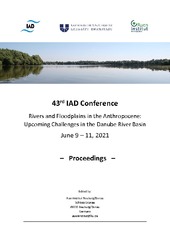Приказ основних података о документу
Mapping of the microbiological water quality of surface waters in Serbia overlooked by the National monitoring programme
| dc.contributor | Sandu, Cristina | |
| dc.contributor | Cyffka, Bernd | |
| dc.creator | Jovanović Marić, Jovana | |
| dc.creator | Kolarević, Stoimir | |
| dc.creator | Kračun-Kolarević, Margareta | |
| dc.creator | Đorđević, Jelena | |
| dc.creator | Paunović, Momir | |
| dc.creator | Vuković-Gačić, Branka | |
| dc.date.accessioned | 2022-01-19T14:04:00Z | |
| dc.date.available | 2022-01-19T14:04:00Z | |
| dc.date.issued | 2021 | |
| dc.identifier.uri | http://radar.ibiss.bg.ac.rs/handle/123456789/4732 | |
| dc.description.abstract | Surface waters in Serbia are under high anthropogenic pressure. One of the major problems is untreated municipal and industrial wastewaters. Unfortunately, Serbia processes only 5 % of wastewaters before discharging. As a consequence, pollutants such as metals and metalloids from industrial wastewaters, pharmaceuticals, compounds from personal care products, etc. directly endure into surface water. Microbial faecal pollution, as an indicator of presence of human or/and animal pathogens, due to health hazard limits water usage for drinking, recreation, irrigation, etc. In regulations, faecal coliforms, with Escherichia coli as dominant representative, are widely used as faecal indicator bacteria. The aim of this study was to investigate the microbiological al water quality in the Republic of Serbia at the sites which are not routinely investigated within the national monitoring program. In this purpose 78 sites situated on canals, mountain springs, as well as lowland rivers were selected. Defined Substrate Technology was used for determination Most Probable Number (MPN) of E. coli using Colilert-18 System. The water classification system, developed for the Danube River (Kavka et al., 2006) was used. The results indicated that more than 47 % of selected sites are under critical (21.79 %) or strong (25.64 %) faecal pollution. On the other hand, about 32 % (32.05 %) of sites are little polluted and 20.51 % of sites showed moderate pollution. The increasing levels of faecal pollution detected on sites situated downstream of settlements indicated discharge of untreated municipal wastewaters directly into surface water. In further research, the focus will be placed on the determination of the origin of pollution by the employment of microbial source tracking technique. Obtained data will be used for modelling and predicting the effect of detected contamination on the water quality of the major water bodies in the Republic of Serbia | sr |
| dc.language.iso | en | sr |
| dc.publisher | Neuburg: Aueninstitut Neuburg | sr |
| dc.rights | openAccess | sr |
| dc.source | 43rd IAD Conference: Rivers and Floodplains in the Antropocene: Upcoming Challenges in the Danube River Basin | sr |
| dc.title | Mapping of the microbiological water quality of surface waters in Serbia overlooked by the National monitoring programme | sr |
| dc.type | conferenceObject | sr |
| dc.rights.license | ARR | sr |
| dc.rights.holder | © 2021 by the Aueninstitut Neuburg | sr |
| dc.description.other | Sandu C, Cyffka B, editors. Proceedings: 43rd IAD Conference: Rivers and Floodplains in the Anthropocene: Upcoming Challenges in the Danube River Basin; 2021 Jun 9-11; Neuburg, Germany. 2021. p. 19. | sr |
| dc.citation.spage | 19 | |
| dc.type.version | publishedVersion | sr |
| dc.identifier.fulltext | https://radar.ibiss.bg.ac.rs/bitstream/id/9747/43rd_IAD_Conference_Proceedings-19.pdf | |
| dc.citation.rank | M34 | |
| dc.identifier.rcub | https://hdl.handle.net/21.15107/rcub_ibiss_4732 |

